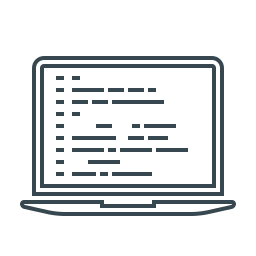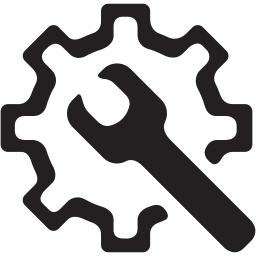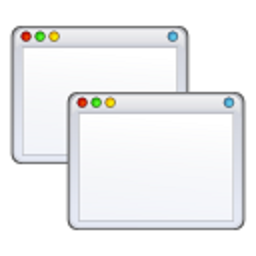GERMANE TECHS
PHP

Why PHP?
Imagine you're exploring the world wide web, navigating through websites, and interacting with various online platforms like social media, e-commerce sites, or content management systems. Have you ever wondered how these websites work behind the scenes? How do they display personalised information, process user inputs, or dynamically update content? That's where PHP comes into play.
PHP, which stands for "Hypertext Preprocessor", is a powerful scripting language specifically designed for web development. It's the engine behind many of the interactive and dynamic features you experience while browsing the internet.
When you log into your favourite social media platform and see real-time updates, post comments, or interact with friends, PHP is working tirelessly in the background to make those experiences possible. It's the language used to create functionalities like user authentication, content management, and database interactions that make websites dynamic and engaging.
Think of PHP as the architect behind the scenes, working with HTML, CSS, and JavaScript to bring websites to life. It seamlessly integrates with databases, enabling websites to store and retrieve data, personalise content, and respond to user actions.
Whether you're browsing Facebook, watching videos on YouTube, or shopping on e-commerce sites, PHP is often the driving force behind the scenes, making these web experiences interactive, responsive, and tailored to your needs.
By exploring PHP Programming Technology, you'll have the skills to create your dynamic web applications, laying the groundwork for your journey as a web developer in this ever-evolving digital landscape.
Imagine you're exploring the world wide web, navigating through websites, and interacting with various online platforms like social media, e-commerce sites, or content management systems. Have you ever wondered how these websites work behind the scenes? How do they display personalised information, process user inputs, or dynamically update content? That's where PHP comes into play.
PHP, which stands for "Hypertext Preprocessor", is a powerful scripting language specifically designed for web development. It's the engine behind many of the interactive and dynamic features you experience while browsing the internet.
When you log into your favourite social media platform and see real-time updates, post comments, or interact with friends, PHP is working tirelessly in the background to make those experiences possible. It's the language used to create functionalities like user authentication, content management, and database interactions that make websites dynamic and engaging.
Think of PHP as the architect behind the scenes, working with HTML, CSS, and JavaScript to bring websites to life. It seamlessly integrates with databases, enabling websites to store and retrieve data, personalise content, and respond to user actions.
Whether you're browsing Facebook, watching videos on YouTube, or shopping on e-commerce sites, PHP is often the driving force behind the scenes, making these web experiences interactive, responsive, and tailored to your needs.
By exploring PHP Programming Technology, you'll have the skills to create your dynamic web applications, laying the groundwork for your journey as a web developer in this ever-evolving digital landscape.

BASICS OF WEB DEVELOPMENT
Before delving into PHP, let's take a step back and explore the fundamental components of web development. Imagine the internet as a vast canvas, and websites as the paintings adorning it. These websites are crafted using various building blocks that work together harmoniously.
HTML (HyperText Markup Language) serves as the foundation, providing the structure and content of web pages. It's like the skeleton that defines the layout, headings, paragraphs, images, and links you see when you visit a webpage.
CSS (Cascading Style Sheets) adds style and visual appeal to HTML. It's the artist's palette, allowing designers to define colors, fonts, layouts, and overall aesthetics. CSS transforms the plain structure of HTML into visually appealing and well-organized content.
JavaScript is the interactive element, bringing life to web pages. It's the magician that enables functionalities like interactive forms, animations, dynamic content updates, and responsive designs. JavaScript makes websites more engaging and responsive to user interactions.
PHP complements these technologies by providing server-side scripting capabilities. Unlike HTML, CSS, and JavaScript, which run on the client-side (in the user's browser), PHP operates on the server, handling tasks like processing form data, interacting with databases, and generating dynamic content that's sent to the user's browser.
Together, HTML, CSS, JavaScript, and PHP form a cohesive ecosystem, working in tandem to create the web experiences we encounter daily. Understanding how these pieces fit together lays the groundwork for developing dynamic and interactive web applications.
In this tutorial, I explored how it integrates with HTML, interacts with databases, and contributes to the dynamic nature of websites. This foundational understanding will empower you to not only code in PHP but also to create robust, interactive, and user-centric web applications.
Before delving into PHP, let's take a step back and explore the fundamental components of web development. Imagine the internet as a vast canvas, and websites as the paintings adorning it. These websites are crafted using various building blocks that work together harmoniously.
HTML (HyperText Markup Language) serves as the foundation, providing the structure and content of web pages. It's like the skeleton that defines the layout, headings, paragraphs, images, and links you see when you visit a webpage.
CSS (Cascading Style Sheets) adds style and visual appeal to HTML. It's the artist's palette, allowing designers to define colors, fonts, layouts, and overall aesthetics. CSS transforms the plain structure of HTML into visually appealing and well-organized content.
JavaScript is the interactive element, bringing life to web pages. It's the magician that enables functionalities like interactive forms, animations, dynamic content updates, and responsive designs. JavaScript makes websites more engaging and responsive to user interactions.
PHP complements these technologies by providing server-side scripting capabilities. Unlike HTML, CSS, and JavaScript, which run on the client-side (in the user's browser), PHP operates on the server, handling tasks like processing form data, interacting with databases, and generating dynamic content that's sent to the user's browser.
Together, HTML, CSS, JavaScript, and PHP form a cohesive ecosystem, working in tandem to create the web experiences we encounter daily. Understanding how these pieces fit together lays the groundwork for developing dynamic and interactive web applications.
In this tutorial, I explored how it integrates with HTML, interacts with databases, and contributes to the dynamic nature of websites. This foundational understanding will empower you to not only code in PHP but also to create robust, interactive, and user-centric web applications.

FUNDAMENTALS OF PHP
PHP, as mentioned earlier, stands for "Hypertext Preprocessor". It's a server-side scripting language, meaning it runs on the web server and generates dynamic content that is then sent to the user's browser.
PHP is renowned for its simplicity and power. It allows developers to embed PHP code directly within HTML, making it seamless to create dynamic web pages. For instance, you can use PHP to fetch data from a database and display it on a webpage, or create forms that send user input to a server for processing.
PHP, as mentioned earlier, stands for "Hypertext Preprocessor". It's a server-side scripting language, meaning it runs on the web server and generates dynamic content that is then sent to the user's browser.
PHP is renowned for its simplicity and power. It allows developers to embed PHP code directly within HTML, making it seamless to create dynamic web pages. For instance, you can use PHP to fetch data from a database and display it on a webpage, or create forms that send user input to a server for processing.
- Syntax and Structure: PHP code is enclosed within "<?php" and "?>" tags and follows a syntax similar to C and Perl. It's flexible, allowing you to mix PHP seamlessly with HTML.
- Variables and Data Types: PHP supports various data types like strings, integers, floats, arrays, and more. Understanding how to declare variables and use different data types is fundamental.
- Control Structures: Just like other programming languages, PHP includes control structures like if-else statements, loops (for, while, foreach), and switch-case, enabling conditional execution and iterative operations.
- Functions: Functions in PHP encapsulate reusable pieces of code. They allow you to break down tasks into smaller, manageable units, promoting code reusability and maintainability.
- Working with Forms: PHP is extensively used in handling form submissions. It enables the retrieval and processing of user input from HTML forms, making websites interactive and responsive to user actions.

DATABASE INTERACTION
Databases are the repositories where we store, organise, and retrieve data crucial for dynamic web applications. PHP's seamless integration with databases empowers us to create data-driven and interactive websites.
PHP allows us to interact with various types of databases, such as MySQL, MariaDB, PostgreSQL, SQLite, and more. Here's a glimpse into how PHP facilitates this interaction:
Databases are the repositories where we store, organise, and retrieve data crucial for dynamic web applications. PHP's seamless integration with databases empowers us to create data-driven and interactive websites.
PHP allows us to interact with various types of databases, such as MySQL, MariaDB, PostgreSQL, SQLite, and more. Here's a glimpse into how PHP facilitates this interaction:
- Connecting to Databases: PHP provides functions to establish connections with databases. Using appropriate credentials, PHP connects to the database server, enabling communication between the web application and the database.
- Performing CRUD Operations: CRUD stands for Create, Read, Update, Delete - the essential operations in database management. PHP allows us to execute SQL queries to perform these operations on the database. For instance, adding new records, retrieving specific data, updating existing records, or deleting unnecessary information.
- Security Measures: PHP emphasizes security when interacting with databases. It promotes the use of prepared statements and parameterised queries to prevent SQL injection attacks, ensuring that user input is handled securely before executing SQL queries.
- Data Retrieval and Manipulation: With PHP, we can fetch data from the database and manipulate it before presenting it to users. This manipulation might involve formatting, sorting, filtering, or combining data retrieved from multiple tables.
- Dynamic Content Generation: Leveraging PHP's database interaction capabilities, we can dynamically generate content based on user preferences, personalise information, and create user-specific experiences on web pages.

PRACTICAL EXAMPLES
Practical exercises serve as invaluable learning tools, allowing you to apply theoretical concepts in real-world scenarios.
By engaging in these hands-on exercises, you can witness firsthand how PHP enables the creation of interactive, dynamic, and data-driven web applications, setting the stage for your own creative endeavours in web development.
Practical exercises serve as invaluable learning tools, allowing you to apply theoretical concepts in real-world scenarios.
- Creating a Simple Registration Form: As a basic exercise, you can create a registration form using HTML and PHP. This form might collect user details like name, email, and password. Demonstrate how PHP handles form submissions, validates inputs, and stores user data securely in a database.
- Building a Content Management System (CMS): You can also develop a simple CMS where users can create, edit, and delete articles or blog posts; showcase how PHP interacts with a database to manage content; demonstrating CRUD operations such as adding new posts, updating existing ones, and displaying content dynamically on web pages.
- User Authentication System: You can design a login and registration system with user authentication; utilise PHP to validate user credentials; manage user sessions securely; and restrict access to certain pages based on user roles or permissions.
- Implementing a Shopping Cart: You can build a basic e-commerce functionality by implementing a shopping cart system. You can use PHP to manage product listings, handle user interactions like adding items to the cart, calculating totals, and processing orders.
- Dynamic Content Loading: You can create a web page that dynamically fetches content from a database. For instance, display a list of products, news articles, or user comments fetched from a database using PHP, emphasizing the dynamic nature of content generation.
By engaging in these hands-on exercises, you can witness firsthand how PHP enables the creation of interactive, dynamic, and data-driven web applications, setting the stage for your own creative endeavours in web development.

RESOURCES AND TOOLS
In the journey of learning PHP, having access to the right resources and tools can greatly accelerate your understanding and proficiency. Let's explore some valuable resources and tools that will assist you in mastering PHP:
In the journey of learning PHP, having access to the right resources and tools can greatly accelerate your understanding and proficiency. Let's explore some valuable resources and tools that will assist you in mastering PHP:
- Online Documentation: PHP.net offers comprehensive documentation covering PHP functions, syntax, and best practices. Encourage students to refer to this official documentation as a reliable source of information and examples.
- IDEs and Code Editors: Integrated Development Environments (IDEs) such as PhpStorm, Visual Studio Code, or editors like Sublime Text and Atom offer features like syntax highlighting, code completion, and debugging tools that enhance the PHP coding experience.
- Local Development Environments: You can install local development environments like XAMPP, WAMP, or MAMP. These bundles include Apache, MySQL, and PHP, providing a self-contained environment for practicing PHP development offline.
- Version Control Systems: You can include version control using Git and platforms like GitHub or Bitbucket, for version control in collaborative coding and tracking changes in your PHP projects.
- Community Fora and Q&A Sites: Websites like Stack Overflow and PHP-specific fora are treasure troves of knowledge. You can explore these platforms to seek solutions to coding problems, share experiences, and learn from others in the PHP community.

REAL-WORLD APPLICATIONS
Understanding the real-world applications of PHP is crucial in appreciating its significance in the field of web development.
Understanding the real-world applications of PHP is crucial in appreciating its significance in the field of web development.
- Content Management Systems (CMS): Many popular CMS platforms like WordPress, Joomla, and Drupal are built using PHP. These platforms leverage PHP's flexibility and extensibility to create customisable and feature-rich websites.
- Frameworks: A framework is a pre-built set of tools, libraries, and conventions designed to help developers build web applications more efficiently and effectively. Frameworks provide a structured way to organise code, enforce best practices, and handle common tasks, allowing developers to focus on application-specific features rather than reinventing the wheel. Many frameworks like Laravel, Symfony, CodeIgniter, Yii, Johnny's Portal, and Zend are built using PHP. Developers can choose a framework based on their specific needs, preferences, and project requirements.
- E-Commerce Websites: PHP is widely used in building e-commerce websites. Platforms like Magento and WooCommerce harness PHP's capabilities to manage product catalogs, handle transactions securely, and provide a seamless shopping experience.
- Social Media Platforms: PHP has been integral in the development of social media platforms. For instance, Facebook was initially built using PHP, demonstrating its scalability and efficiency in handling massive user interactions.
-
Web Applications and Portals: PHP powers various web applications, portals, and online systems in sectors such as education, healthcare, finance, and government. Its ability to handle data processing, user authentication, and content delivery makes it a preferred choice in developing such applications.
PHP is a widely used programming language for developing websites and web applications. Here's a list of well-known websites that were developed using PHP:- Facebook: Initially built with PHP, Facebook's early versions heavily relied on this language for its core functionalities. Though Facebook's infrastructure has evolved significantly, PHP played a crucial role in its early development.
- Wikipedia: The world's largest online encyclopedia, Wikipedia, utilises PHP for its content management system, allowing collaborative editing and content contributions from users globally.
- WordPress.com: WordPress, one of the most popular content management systems, powers millions of websites worldwide. Its platform is built using PHP, making it flexible, customizable, and scalable for various website needs.
- Yahoo: Yahoo, in its earlier iterations, was powered by PHP for various features and functionalities, including user interaction and content management.
- Flickr: A popular image and video hosting platform, Flickr, was initially developed using PHP, allowing users to upload, share, and manage their media content.
- Tumblr: A microblogging and social networking platform, Tumblr, uses PHP for its backend to manage user-generated content and interactions.
- Etsy: An e-commerce platform focusing on handmade and vintage items, Etsy, relies on PHP for various aspects of its platform, including user interactions and product management.
- Mailchimp: This email marketing service, known for its user-friendly interface, utilises PHP for its backend functionalities, allowing users to create, manage, and send marketing campaigns.
- Moodle: An open-source learning management system, Moodle, is developed using PHP, enabling educators to create online courses and educational platforms.
- Baidu: A leading Chinese search engine, Baidu, employs PHP for various parts of its website and services, allowing users to search and access information online.
- Dynamic Websites: PHP is extensively used in creating dynamic websites that generate content on-the-fly based on user inputs or database interactions. News websites, forums, blogs, and interactive platforms heavily rely on PHP for content management and user engagement.
- API Development: PHP is employed in creating APIs (Application Programming Interfaces) that enable communication between different software systems. APIs built using PHP facilitate data exchange and integrations across various platforms and services.

PHP HISTORY
PHP was created by Rasmus Lerdorf in 1994. Initially, PHP was a set of Common Gateway Interface (CGI) binaries written in the C programming language for tracking visits to his online resume. The name originally stood for "Personal Home Page".
Here's a brief timeline of PHP's history:
PHP was created by Rasmus Lerdorf in 1994. Initially, PHP was a set of Common Gateway Interface (CGI) binaries written in the C programming language for tracking visits to his online resume. The name originally stood for "Personal Home Page".
Here's a brief timeline of PHP's history:
- 1994: Rasmus Lerdorf created PHP/FI (Personal Home Page/Forms Interpreter) version 1.0, a set of Perl scripts to manage his personal homepage and track visitors.
- 1995: PHP/FI 2.0 was released, adding more features like database access and the ability to create simple dynamic web pages.
- 1997: The PHP core team was formed, led by Zeev Suraski and Andi Gutmans. They rewrote the PHP parser, forming the base for PHP 3.
- 1998: PHP 3 was released as a standalone language, no longer just a set of tools but a fully-fledged scripting language. It gained widespread popularity due to its simplicity and power for web development.
- 2000: PHP 4 was released with significant improvements, including a more robust core, better performance, and enhanced support for databases and object-oriented programming (OOP).
- 2004: PHP 5 was released, introducing the Zend Engine 2.0, which significantly improved performance and added support for more advanced OOP features like interfaces and exceptions.
- 2005: The development of PHP 6 began, aiming to include native support for Unicode and internationalisation. However, due to complexities and delays, PHP 6 was eventually abandoned.
- 2014: PHP 7 was released, a major leap forward in performance and resource utilisation. It introduced the Zend Engine 3.0, offering significant speed improvements over its predecessors.
- 2020: PHP 8 was released, bringing substantial improvements in performance, syntax, and features. Notable additions included the JIT compiler for performance enhancements and updates to the language syntax.
PHP Basics
- Introduction
- Variables
- Data Types
- Math
- Constants
- Operators
- Conditional Statements
- Loops
- Functions
- Superglobals
- RegEx
- Forms
- File Handling
- Cookies & Sessions
- Filters
- JSON
- Exception Handling
PHP OOP
- Classes/Objects
- Constructor
- Destructor
- Access Modifiers
- Inheritance
- Constants (OOP)
- Abstract Classes
- Interfaces
- Traits
- Static Methods
- Static Properties
- Namespaces
- Iterables
PHP Databases
- Databases
- Connecting to Databases
- CRUD Operations (Create, Read, Update, Delete)
- Database Abstraction
- SQL Queries
- Form Handling and Data Validation
- Sessions and Security
- Working with Multiple Tables and Joins
- Handling Images and Files in Databases
- ORM (Object-Relational Mapping)
- Transactions and Error Handling
- Performance Optimisation
PHP XML